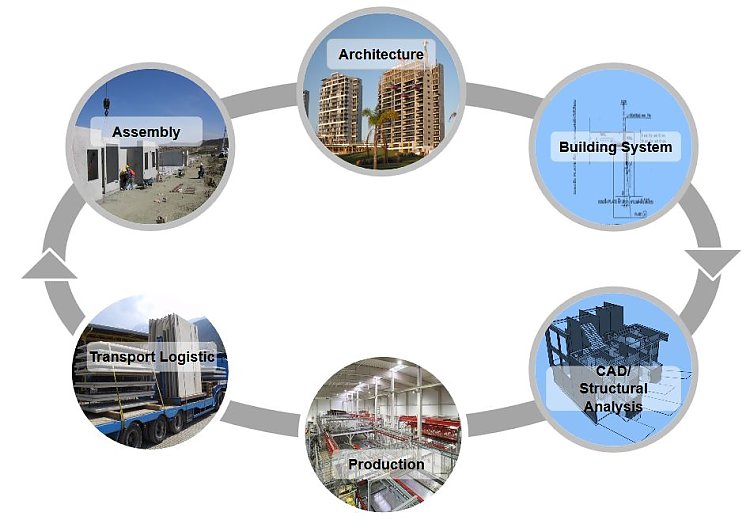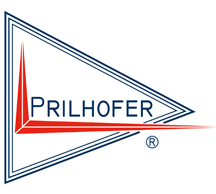BIM (Building Information Modeling)
Essential basics and importance for the industrialized construction method
Robert Aish introduced the term BIM during the 80s. It was not possible until the middle of the 2000s to develop such models on a daily basis because the required soft- and hardware were too expensive or not available yet.
What is BIM (Building Information Modeling)
BIM is a dynamic method for the design, construction and management of buildings by means of a specific software. The data generated by this software can be used to support tasks ranging from the construction of a building (production of the construction elements) to the facility management and finally the ultimate demolition of the building.

Networking of data to improve the data quality
Data are interconnected and all involved companies have access to the project data using this specific software. In case of a change in the design, the data (the model) are changed and updated by the respective designer. Therefore all parties involved have access to the current data, like designs, estimations of masses etc. BIM improves the data quality significantly because all parties involved work with the same data and data formats. Hence, all designers can keep track of costs and deadlines. Problems can be detected and solved quite early.
Advantages of design documentation & storage of building data
The whole design process and life cycle of a building is documented in BIM, which makes the post calculation of a project much easier. All used materials and quantities are documented and therefore easier to be replaced or to be disposed of in the case of a later conversion or demolition of the building.
Users of BIM can also record data for the management of a building. This significantly improves the quality of data about energy consumption, maintenance work etc.

